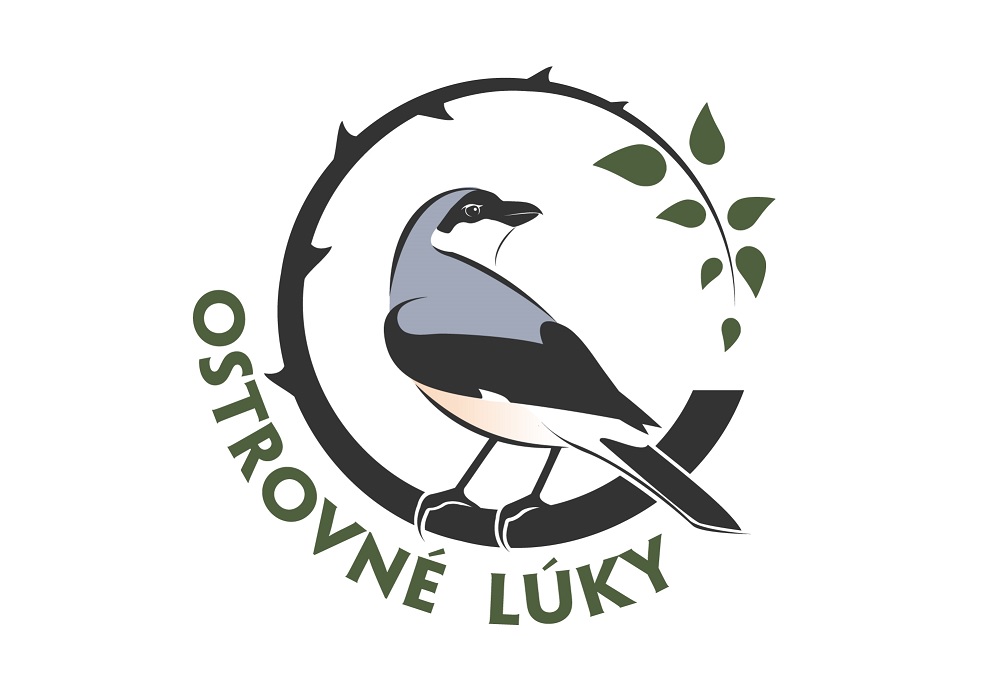We participate in the active protection of bird species of European importance
Project general objective is to contribute to habitat restoration for Annex I species of Birds Directive – Lesser Grey Shrike (Lanius minor), Tawny Pipit (Anthus campestris) and Red-footed Falcon (Falco vespertinus) in SPA Ostrovné lúky through establishing a suitable model management of the agricultural land and restoration of their feeding and nesting habitats.
- News
- Basic information and objectives
- Target species
- Project area
- Activities
- Achieved results
- Presentation of project results
- Media outputs
- The Secrets of Vermin
- Educational path Príbeh krajiny
- Brochure Stories from the land of meadows
- Personnel


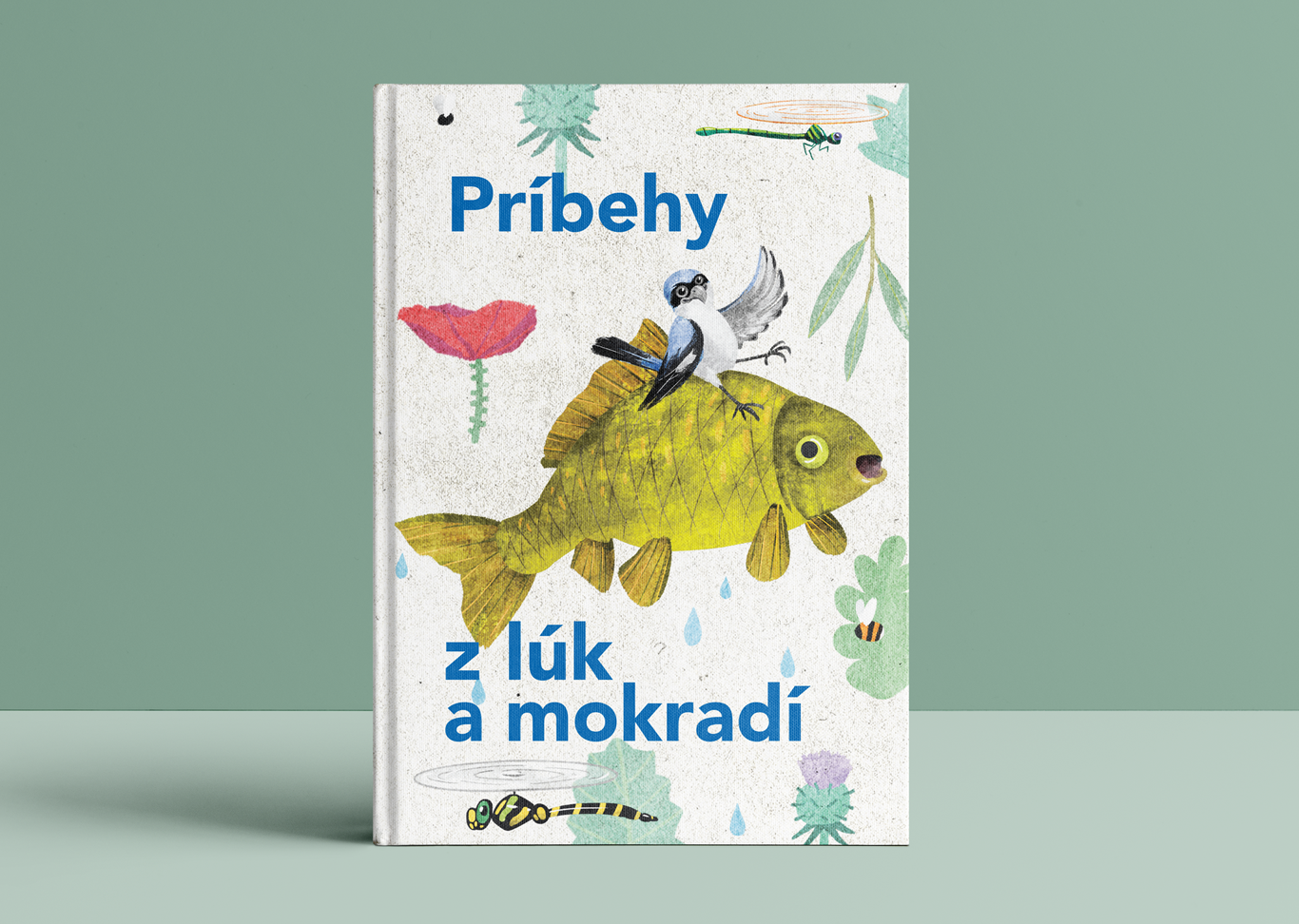
We are publishing a fairy-tale book for children
The BROZ people decided to issue a fairy-tale book for children and to translate the environmental connections into a children´s language.

We enjoyed the June solstice day in Dropie
Within the project of the Conservation of Birds in SPA Ostrovné Lúky we organized a summer welcome event in the SEV Dropie. It was attended by the local residents, stakeholders and primary school students.

We prepared a document for you – Land of Meadows: a forgotten story
One of the outputs of the Conservation of Birds in SPA Ostrovné Lúky Project was also a documentary film titled the Land of Meadows: a forgotten story.
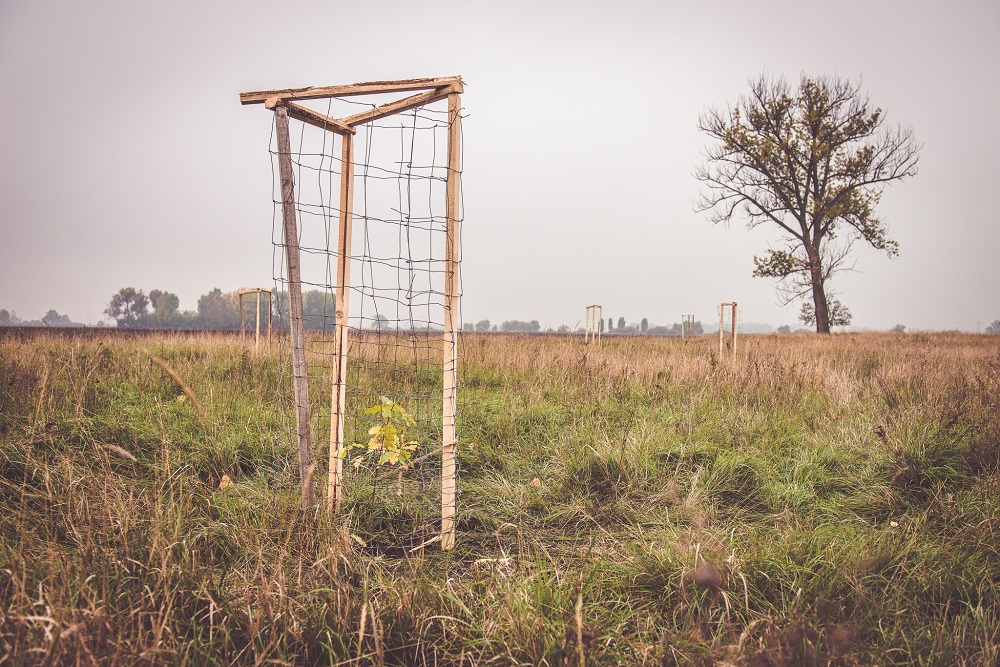
Green alley rally – planting trees with volunteers
On 17th and 18th October 2020, within the EU Green week partner event Green alley rally, we have been planting trees together with locals and volunteers from OZ Permoníci. We have planted more than 70 trees in agricultural land in NATURA 2000 SPA Ostrovné lúky.

Monitoring bike trip around Ostrovné Lúky SPA
We have decided to do this year's monitoring of project results on bicycles! We had good fortune in the form of a beautiful indian summer and the newly restored pastures were still beautifully green. In contrast to the surrounding "naked" fields, pastures in this country seemed even more precious.

Life returns to newly established wetlands
Wetlands were once such a part of life in the local country that the locals had more than 20 different terms for "wetland". Before the drainage of Rye Island, every centimeter of altitude was of great importance in the region, and these morphological differences were reflected in various names: gyűr, sziget, lapos.

From the filming of a documentary about Ostrovné Lúky
Also during this summer, we continued to shoot the upcoming documentary about Ostrovné Lúky. In this document, we deal with the topic of nature conservation and restoration in an intensively farmed country, as well as the efforts and pitfalls of nature-friendly farming.

How to increase the country’s resilience to the effects of climate change
The impact of climate change in southern Slovakia is already very noticeable today. Increased temperature and lack of rainfall affect not only farmers but also the surrounding nature.

Water in the landscape: Restoration of Čalovecký Dudváh meanders
As a result of several historical events, the country of the Lower Rye Island has changed beyond recognition in a few decades. The mosaic of wetlands, river side arms and vegetation has been transformed into a lifeless chessboard of large monoculture fields. Today, even the last meanders of Čalovecký Dudváh river which once flew through the countryside are plowed to create even larger field units for easier harvest. All this is still hapening at a time when water is becoming increasingly scarce in the soil and throughout the country.
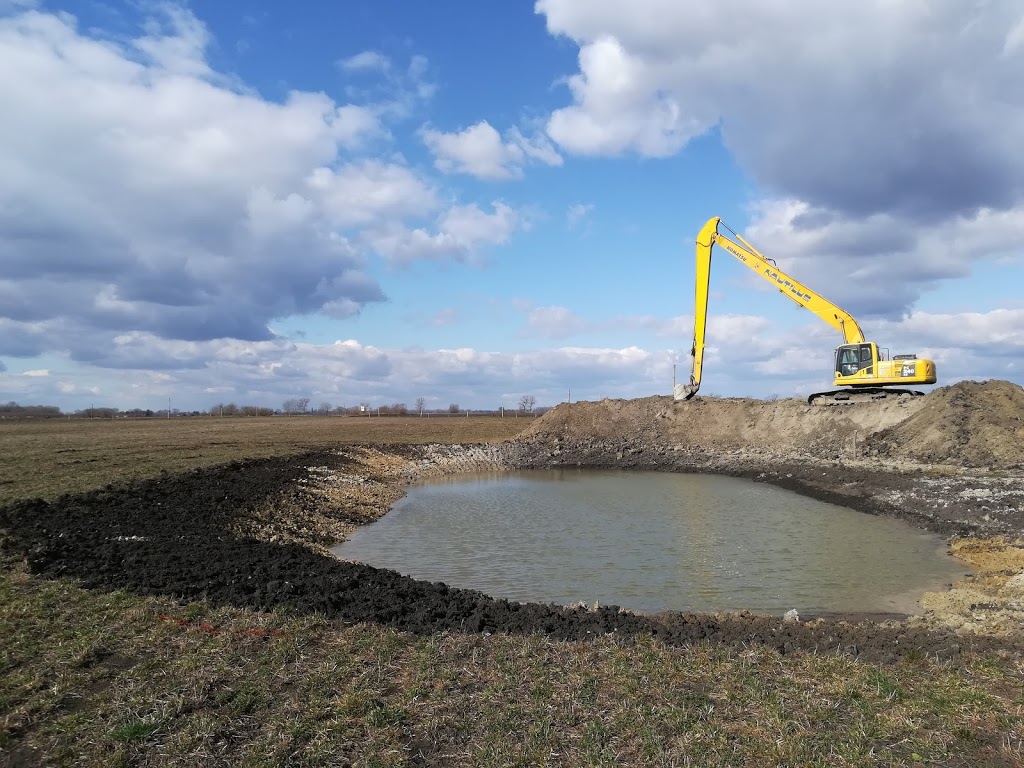
VIDEO: 2 in 1 – restoration of wetlands and bird nesting walls
During the restoration of small-scale wetlands in the Protected Bird Area Ostrovne Lúky, we got an idea - what if we used the excavated material to build nesting walls for birds right at the foot of the wetlands? We have recorded a nesting site of the European beekeeper in sand embankments in the area and we hope that they will like our new nesting walls so much that they will decide to nest in them this season after returning from their wintering grounds. The small wetlands are being created on restored pastures where the birds can find enough food. The water under the nesting wall will provide refreshment during hot summer days while protecting their offspring from predators.

Willow pollarding workshop 2020
Today we pollarded willows in protected bird area Ostrovne Luky. The day saw a lot of action, sawing, falling wood.. Even nature conservation and sustainable management of the countryside can sometimes look this way. For old willows pollarding is essential to prolog their life-span.

We will restore wetlands in a landscape suffering from drought
We will restore small-scale wetlands in SPA Ostrovné Lúky. Not only is it a big support for local biodiversity in the local intensely agricultural landscape, wetlands also help to store fresh water in an area which is suffering from a long-term drought. They also play a significant role as carbon sinks and therefore act as mitigators of climate…

The grazers return to the glasslands! – a herd of rescued horses
We are thrilled at the nice outcome of a cooperation between nature conservationists and animal protectors. On the pohotographs you can see the result of two good things coming together. This month we started a cooperation with a local stakeholder, a lady who rescues abandoned and neglected horses. She was looking for a medow where they could graze and have…
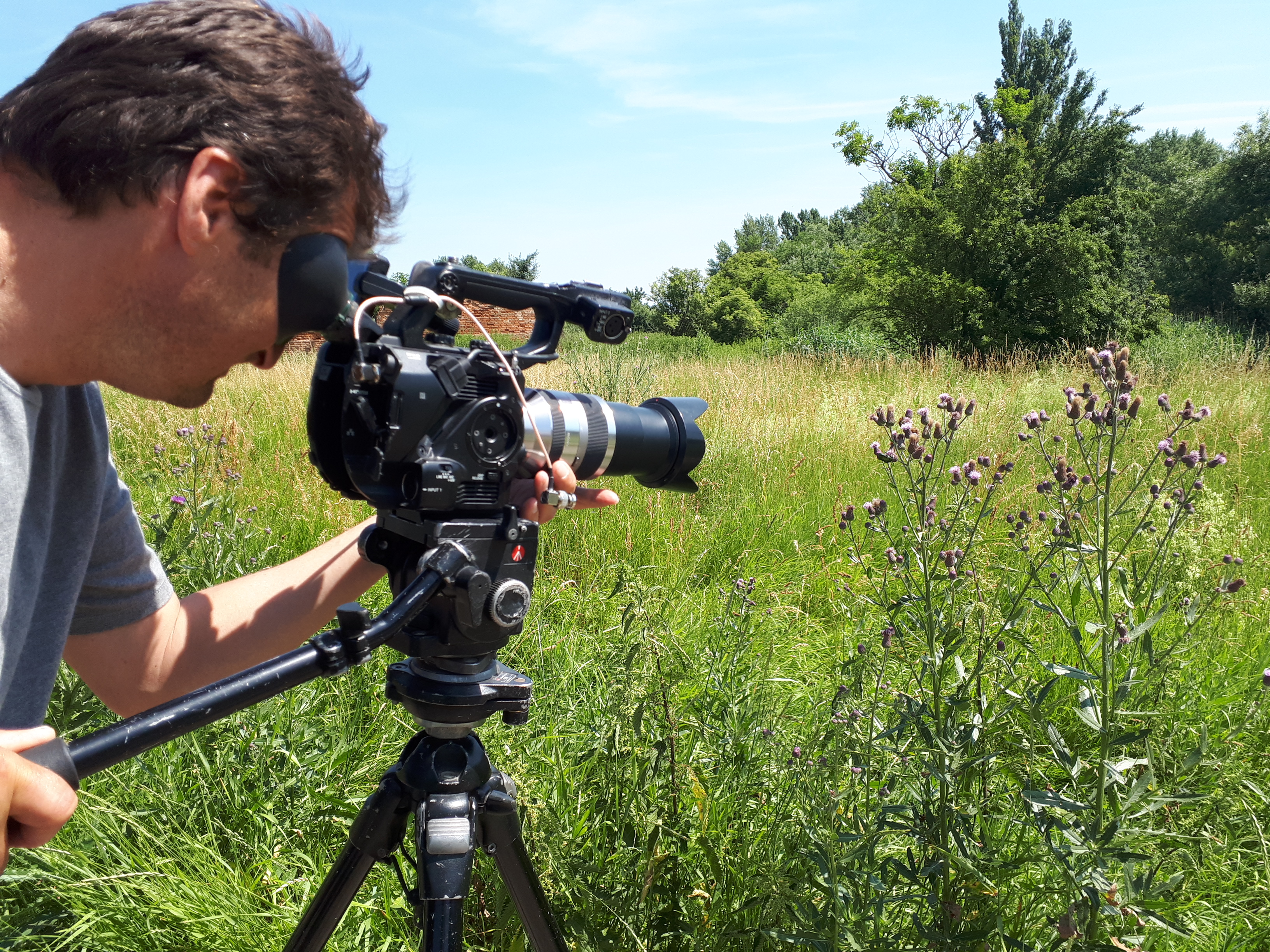
We are filming a documentary about nature conservation in agricultural landscapes
In cooperation with the documentary-maker Braňo Molnár we are making a unique documentary about conservation efforts in areas where nature under pressure from intense agriculture. Such a „template“ are si SPA Ostrovné Lúky, where we are implementing the LIFE Ostrovne Luky conservation project. The nature in the area is facing similar challenges as elsewhere in agricultural…

Mature hollow willows – islands of biodiverzity in an endless agricultural landscape
During the weekend we worked with saw chains. A not-so-standard activity for conservationists but much needed for the old pollard willows and the creation of suitable micro-habitats for an array of different species. It might sound strange, but coppicing helps the old willows, it can extend their life-span by up to a 100 years! During long-term and…

Installing perches for birds near restored grasslands in SPA Ostrovné Lúky
During the autumn we installed several tall wooden perches for birds. They are all near grasslands restored by BROZ and will serve as resting and hunting spots for different bird species. Watch the VIDEO from the installation.
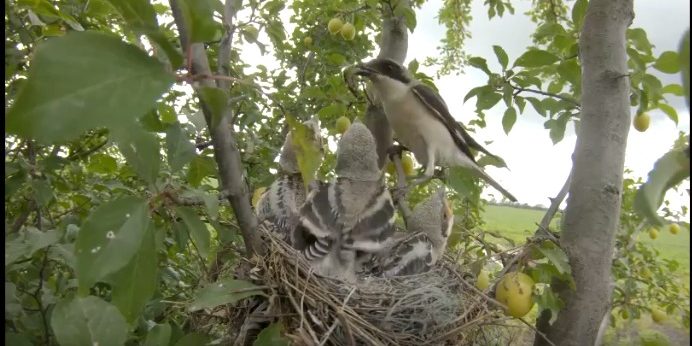
Take a peek into the nest of lanius minor
You can watch the video HERE The area of SPA Ostrovne Luky is under intense agricultural pressure causing suitable habitats for birds such as the great lesser shrike to dissapear. Chemisation of the arable land causes the insect – prey to many bird species to disspear at an allarming rate. The shots were made as…

School timetables and tatoos!
We prepared timetables for school children and water tatoos that introduce the life and ecology of target bird species of LIFE Ostrovné Lúky project. We distributed the timetables around elementary schools in the area of the SPA.

Shadoofs
In the past the shadoof played an important function for grazing and also created a significant esthetic element in the landscape of the Lower Rye Island. As part of the LIFE Ostrovné Lúky project we built 5 “dummy” shadoofs during summer 2018, to serve as perches for birds since intensely agriulturalized land does not offer…
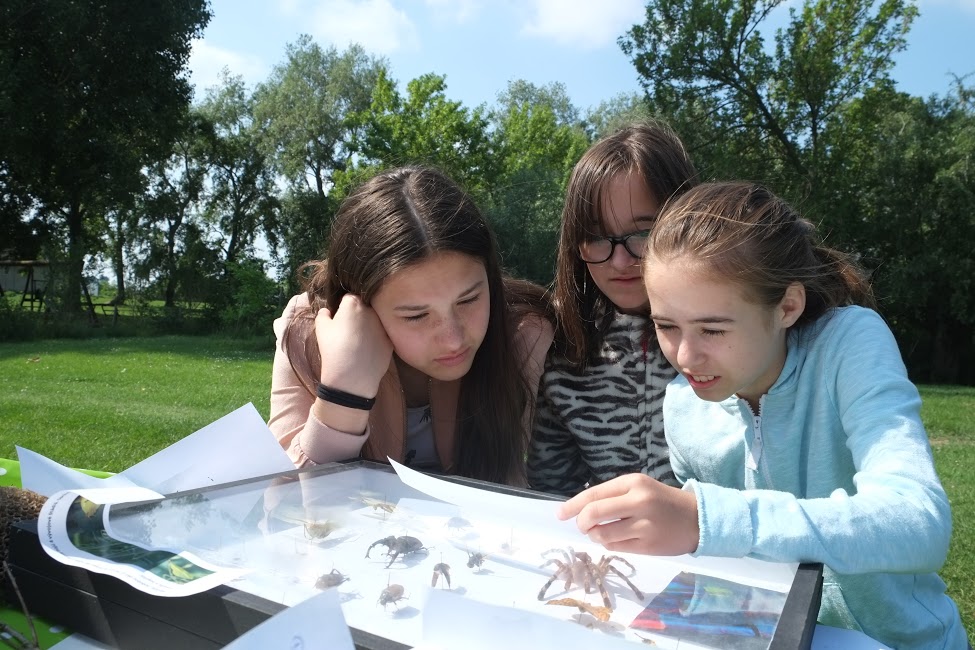
Enviro-competition Hypericum 2018
In springtime SEV Dropie hosts the Hypericum environmental competition for elementary schools. The 19th year of the cometition focused on agrosystems in the Lower Rye Island, their biodiverzity and environmental problems. This is a very hot topic, because badly set agricultural practices have a log lasting negative on the environment. Along with soil degradation the…

VIDEO from workshop on pollard willow management
In our project the end of winter is already traditionally associated with volunteer workshop on pollard willow management. This year for the first time with our new coppicing arm, which allows us to coppice more willows than we would have done just “by hand”. As always a Big Thanks goes to our dedicated volunteers and…

Study trip “Cooperation and nature protection in the area NP Neusiedler See – Seewinkel a Fertő tó”
A study trip entitled “Cooperation and nature protection in the area NP Neusiedler See – Seewinkel a Fertő tó” organized by the Slovak Environmental Agency SEV Dropie was held on 2nd – 3rd May 2017. The study trip was designed primarily for self-government, project workers and key stakeholders at the SPA Ostrovné lúky. The Neusiedler Lake and the adjacent localities of both our…

Environmental contest for primary schools: Hypericum 2017
Are you a primary school and are you interested in environmental education? Join the environmental contest Hypericum which is organised yearly by Slovak Environmental Agency. The contest will take place on 19th April 2017 in The Centre of Environmental Education SAŽP Dropie, Zemianska Olča. It is intended for pupils from 5th to 9th grades of primary school and the main topis of the…

Study trip „How to change a school garden?“”
From 5th to 6th April 2017 the study trip „How to change a school garden?“ took place within the project LIFE12 NAT/SK/001155. We have visited Waldorf primary school and kindergarten in Brno, School facility for environmental education Lipka – facilities Kamenná and Rozmarýnek and also Ecological institute Veronica in Hostětín. The weather was not the best on Thursday, but the program was very inspirational and…

Planting of trees and putting up of bird boxes in SPA Ostrovné lúky
In November 2016, within the project Conservation of birds in SPA Ostrovné lúky we managed to plant 60 native fruit tree species which are characteristic for Rye Island – apricots, cherries and pears. We thank to Dropie for organising sowing and choosing of the place of trees, helping people came also from the activation works from Čalovec, everything…

Is it possible to farm efectively and in harmony with nature?
In sunny morning on 25th October 2016, we are all meeting up at the Lower Rya Island in The Centre of Environmental Education of Slovak Environmental Agency, surrounded by SPA Ostrovné lúky. When the last people of our group arrived, we are starting our never-ending journey to the NP Hortobágy in Hungary. NP Hortobágy is one of the biggest grassland steppes…

Workshop for farmers in SPA Ostrovné lúky
We would like to invite you to a workshop for farmers with a focus on Agroenvironmental Schemes in the Ostrovné lúky, which will be held at 10 a.m. on 3rd November at CEE SAŽP Dropie, Kolárovská 55, 946 14 Zemianska Olča. Please confirm your participation until 2nd November (Wednesday) 12 p.m. at katarina.beresova(at)sazp.sk. The participation is free of charge. Program: 10:00 – 10:20 Arrival and registration…

Bug hotel in Slniečko kindergarden
On 30th September 2016 the children from kindergarten Slniečko together with teachers, parents, grandparents and our colleagues from The Centre of Environmental Education Dropie built the first insect hotel in kindergarten Slniečko in Nové Zámky.

Workshop Tajomstvá hávede
From 24th to 26th August 2016, the people with unusual interest got together in The Centre of Environmental Education Dropie. All three days were dedicated to the new environmental educational program The Secret Life of Bugs. The participants of workshop were teachers from kindergartens and elementary schools, lecturers from Slovak Museum of Nature Protection and Speleology, from Regional Association…

Weekend workshop of pollard willow management
In the last weekend of February we organized the 3rd workshop dedicated to pollard willow managent at SEV Dropie. The willows were traditionally coppiced for wood or crafts and coppicing is necessary for the tree´s wellbeing. The willow acts as a refuge for a number of insect species and privides shelter for roosting bats and…

Summer at SEV Dropie
Summer months are not just about school holidays and time at the beach. At our centre for environmental education Dropie we had been busy with a number of excursions from kindergardens, elementary schools and summer camps. Through an interactive and playful way, the children learned about the beauty and value of the Rye Island, the…

International day of forests at ZŠ Zemianska Olča
On 27.3.2015 we had opened Dropie for everyone. Due to bad weather conditions, however, we held the programme at the elementary school in Zemianska Olča. Together we the pupils we learner how to ID different tree species, and we spoke about the importance of trees for different bird species. The programme was attended by all…
Project title: Conservation of birds in SPA Ostrovné lúky
Project scheme: LIFE+, Nature and Biodiversity
Acronym: LIFE – Ostrovné lúky
Project code: LIFE12 NAT/SK/001155
Duration: 01/01/2014 – 31/12/2020
Budget: 2 672 353 € (50 % contribution by European Commission)
Project objectives:
Project general objective is to contribute to habitat restoration for Annex I species of Birds Directive – Lesser Grey Shrike (Lanius minor), Tawny Pipit (Anthus campestris) and Red-footed Falcon (Falco vespertinus) in SPA Ostrovné lúky through establishing a suitable model management of the agricultural land and restoration of their feeding and nesting habitats.
Specific objectives:
1. Restoration of feeding and nesting habitats by reintroduction of traditional land management, such as grazing or hay making
2. Restoration of wetlands, pollard willows stands, herbaceous and flower fallows with high diversity of insects as primary food source of all target species
3. Restoration of nesting and perching sites
4. Restoration of biocorridors network that apart from its primary migratory function provides also feeding and nesting opportunities for target species
5. Land lease or purchase with purpose to create land use patterns of feeding and nesting habitats and introduce it to appropriate management for target species
6. Increase of overall landscape and species diversity to support habitat and food requirements of target species
7. Acquiring of accurate and up-to-date scientific data on target species
8. Awareness rising of key stakeholders and public


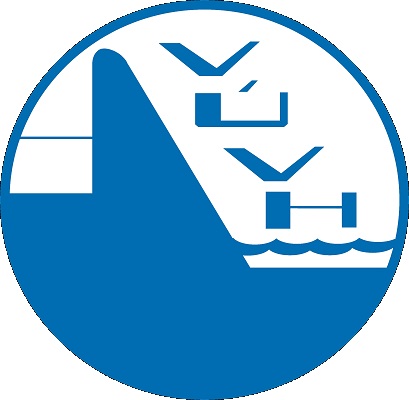

Tawny Pipit (Anthus campestris)
An area of this species in the Western and Central Europe is islet, as it is bound to the sand dunes, dry grasslands, agricultural land and similar habitats. It prefers dry and warm habitats, open landscapes and sandy areas with sparse vegetation. In the 60´s the population of Tawny Pipit has dropped dramatically along with loss of suitable habitat due to land use changes (intensification of agriculture).
In Slovakia, the number of individuals of this species was estimated to be 70 to 150 breeding pairs, with the appearance mostly in lowlands of Podunajská nížina. Recent estimations of abundance within the SPA Ostrovné lúky are 5 pairs.
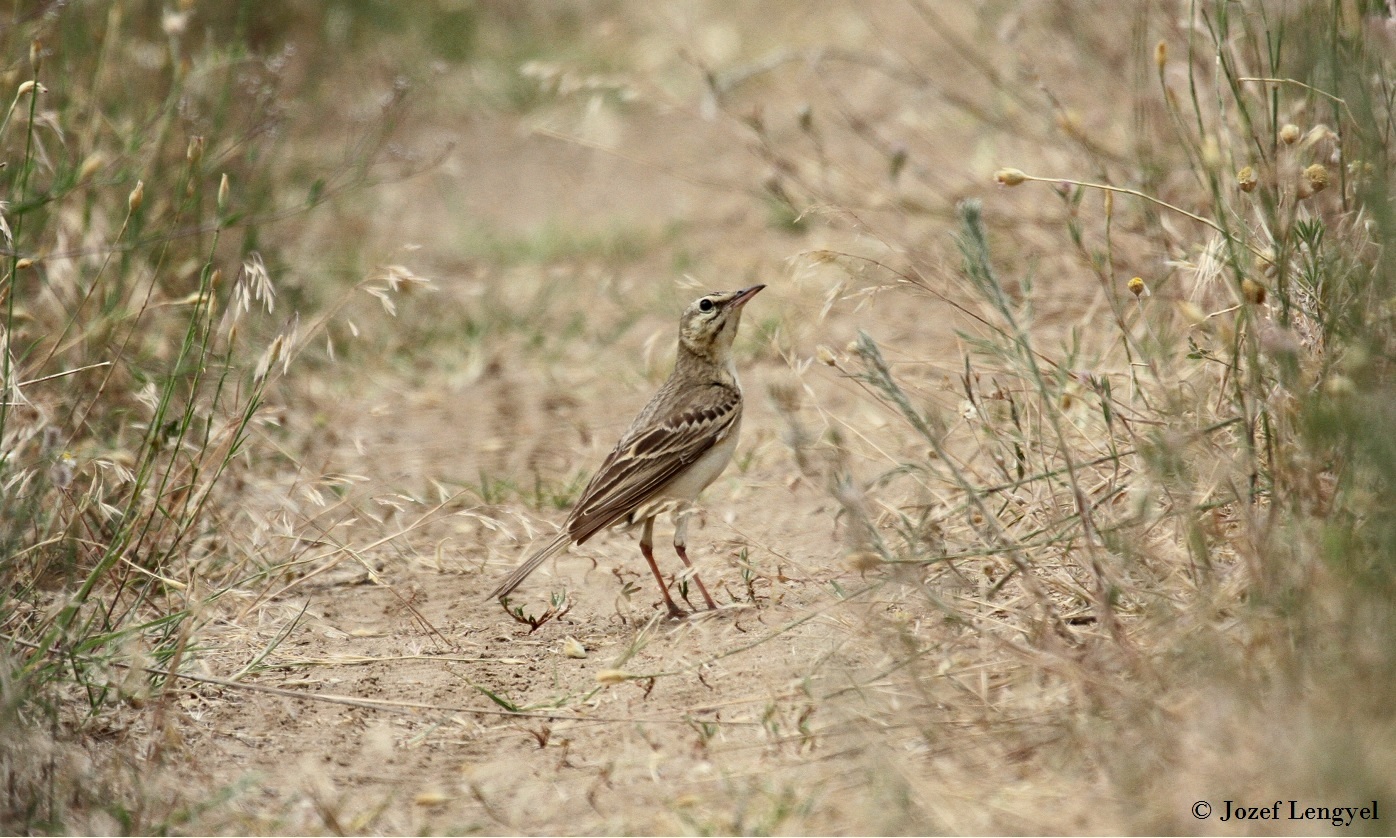
As nesting and breeding habitats requires Tawny Pipit an open space land overgrown with sparse grass and a small number of tree and shrub vegetation. Habitats with grass and herbaceous plant communities with spots of exposed soil surface are also suitable. In an environment of intensively farmed land Tawny Pipit uses edges of field roads overgrown with short grass and herbaceous vegetation as nesting habitats. Elevated places are used for patrolling, singing and hunting. In the past, the boundary stones of each farm, roadside stones and stone-walls were used for this purpose, however these were removed in the context of land consolidation.
In our climate conditions, the breeding takes place from mid-May to mid-July. Tawny Pipit builds its nest on the ground. It feeds almost exclusively on animal food, mainly beetles and ants.
Conservation status: The Birds Directive – Annex I; threatened; populations are stable in Slovakia.
Lesser Grey Shrike (Lanius minor)
Originally Lesser Grey Shrike is the species of dry grass habitats, inhabiting open country especially in the lowlands, which is very well adapted to life in cultivated agricultural areas. However, the condition for its occurrence in such an environment is the presence of trees for nesting of sufficient height and a not-excessive growths of grass (or agricultural crops), which are used for patrolling and prey-hunting. In Europe, it is therefore bound mainly to areas with intensive farming. During the 20th century West European populations have disappeared, except for a few remaining individuals surviving in small, isolated and highly fragmented populations.
In Slovakia, the number of breeding pairs is estimated at 600 to 800, however, this number represents only a fraction of the original population. In the SPA Ostrovné lúky their number is estimated at 5 to 10 breeding pairs.

The Lesser Grey Shrike inhabits a mosaic-like landscape with complex structured habitats (islets of fields and pastures, meadows, agricultural cooperatives, old orchards, edges of forests, vegetation belts with sufficient scattered tall trees). The rapid decline in abundance in the 20th century is associated with the intensification of agriculture and related changes in open countryside. In ideal conditions, this specie lives in open nesting colonies. It builds its nest relatively high (average of 8 meters above the ground).
It feeds on large species of insect – crickets, grasshoppers and beetles.
Conservation status: The Birds Directive – Annex I; vulnerable; significant population decline in Slovakia.
Red-footed Falcon (Falco vespertinus)
In the 20th century there was a significant decline in population due to changes in agricultural land (loss of nesting and feeding opportunities).
At the end of the 20th century, the abundance of this species was estimated to be 20 to 100 breeding pairs in Slovakia. In the past an average number of pairs in SPA Ostrovné lúky ranged from 4 -14.

Red-footed Falcon is an open-land species, which inhabits mainly dry grasslands, steppes and agricultural lowland areas with grasslands and pastures, while avoiding continuous forest cover. It usually uses lines of trees, windbreaks and bank vegetation for nesting and trees and other elevated places for patrolling while hunting the prey.
In optimal conditions the species nests in colonies of up to several dozen pairs. Red-footed Falcon, as well as other Falcon-species, prefers to use old nests of other species before building their own ones (nests of ravens, crows and magpies).
Since the species feeds mainly on large species of insects (grasshoppers, crickets, beetles), it is very sensitive to changes in an agricultural land. It also hunts small species of rodents and other vertebrates and also dragonflies near aquatic habitats.
Conservation status: The Birds Directive – Annex I; threatened; population trend in Slovakia fluctuating / significant decline.
The SPA Ostrovné lúky (8 297,7 ha), an open lowland area inhabited by a typical representative of the avifauna Red-footed Falcon (Falco vespertinus) represents one of the most valuable habitats for its breeding and survival. The present landscape structure of agricultural steppe with dominant fields, patches of mowed grasslands and remnants of forests or willow stands, supports also Lesser Grey Shrike (Lanius minor) and Tawny Pipit (Anthus campestris).
The area is bordered by three rivers – Danube, Váh and Malý Dunaj, and its character was formed only by the water influence in the past. In the period before water management interventions started (in the second half of 19th century), there still existed a dense network of rivers, river branches, oxbows, marshes, bogs, ponds and irregularly flooded terrain depressions. Currently, there are no natural water bodies in the area and it is cut across by a network of drainage channels.
The present landscape structure is of agricultural steppe with dominant fields, patches of mowed grasslands and remnants of forests or willow stands.
Such landscape supports not only a number of rare bird species (nesting, migratory; Birds Directive), but creates home also for other animal species of European importance (Habitats Directive).

A.1: Study of ownership and user relations in the area (BROZ)
– an extensive database of owners in the area will be created using specialized computer software; users will be identified and localized on the maps; negotiations with the owners who might be potentially willing to sell their land or allow the restoration actions on it will be held
A.2: Expert study on revitalization of feeding and breeding habitats of lowland grasslands and pastures (BROZ)
– locations with the biggest potential of restoration of lowland meadows by introduction of grazing and those where restoration of hay meadows is likely possible will be mapped and chosen; the study will propose best methods to restore hay meadows, ideal seed mixture composition for restoration, mowing models of restored meadows and it will also propose best grazing models for the particular locations
A.3: Expert study on restoration of biocorridors network (BROZ)
– the study will include a list of sites suitable for planting local species of trees, orchards, green belts; recommendations of tree and shrubs species composition and seed mixtures for individual sites will be prepared
B.1: Purchase and/or lease of land (BROZ)
– land within the project site suitable for target species will be purchased (60 ha) or long-term leased (30 ha) to introduce appropriate land management and/ or to implement specific conservation actions
C.1: Restoration of feeding and nesting habitats of lowland meadows (BROZ)
– arable land will be changed into grasslands by seeding of native seeds and introduction of regular management – mowing, hay making; after that these should be periodically grazed; the management of sites will be subjected to target birds’ requirements for favourable nesting and breeding conditions
C.2: Restoration of feeding habitats of lowland pastures (BROZ)
– grazing of domestic animals was the traditional and dominating use of grasslands in the project site in the past, however it was replaced by industrialized animal farming later on; the aim of the activity is to bring grazing back to the project site; an extensive grazing by sheep creates low vegetation grasslands with patches of not-grazed herbaceous vegetation, which provide the favourable environment for various species of arthropods, the important food source of the birds
C.3: Restoration of biocorridors network (BROZ)
– this activity is focused on creating a network of biocorridors, consisting of balks, groves, windbreaks, alleys, field paths and edges, bank vegetation, solitary trees and small groups of trees that will provide food and suitable nesting conditions for target species
C.4: Re-introduction of pollard willows management (BROZ)
– in the past trimming of pollard willows used to be a traditional way of providing fire wood for inhabitants or wicker material for baskets and fences; our aim is to restore the treatment of these trees, because a regular cutting shapes a tree into a branched “head” with a lot of cavities and microhabitats used by insect, what creates a food source for birds
C.5: Restoration of small-scale wetlands (VÚVH)
– up to 50 water bodies will be created situated near meadows and pastures restored by other project actions or as parts of bio-corridors; such distribution helps to create diverse landscape, improves microclimatic conditions and retains surface water runoff; wetlands also provide an important food source for birds
C.6: Restoration of nesting and perching sites for target bird species (Prif UK)
– elevated perches, stone monoliths and clusters of boulders or wooden posts will be placed within the biocorridors and in the proximity of restored or preserved grasslands; nest boxes will be hanged up; all these elements will be used to improve the nesting and breeding opportunities of the target species
D.1: Monitoring of an impact of project actions on populations of target species (Prif UK)
– every year the entire project site and its vicinity will be checked for all breeding pairs of the target species in the period May-July; subsequently the breeding success of the target species will be evaluated
D.2: Socio-economic monitoring of project actions impact (Prif UK)
– socio-economic monitoring will assess impacts of the project on local inhabitant and their perception of restoration actions; direct and non-direct benefits will be evaluated; surveys will be evaluated using standard socio-economic data analysis
E.1: Project web page (BROZ)
– the general public including stakeholders will have an access to information about project activities and results as well as target species through a web page available in different languages
E.2: Publishing of information-materials (BROZ)
– brochures, leaflets, final reports for public, stickers, postcards, posters, calendars will help to inform and educate public about project aims and its importance for the target species conservation
E.3: Installation of information panels (SAŽP)
– 10 information panels, 3 interactive “experience panels” and 2 solar information poles will be installed within the project site to inform visitors about target species and their protection
E.4: Installation of observation towers (SAŽP)
– there will be two birdwatching towers placed in project area which will include two panels: one presenting various land use practices and various habitats and the other one describing a typical way of flying and predating movements of birds, so visitors could easily detect and determine bird species
E.5: Educational program for schools and living-insect hotels (SAŽP)
– the program is based on a creation of microhabitats in practice and using them for an education about natural science and conservation issues; such microhabitats will consist of herbal and „butterfly“ gardens, strips of flower and herbaceous vegetation, „insect hotels“ – shelter for various insect, stony habitats for lizards, places for snake hibernation, there will be native trees planted, small wetland created for breeding of insect, the bird boxes and perches will be installed
E.6: Experience sharing, educating and workshops for project personnel, key stakeholders and decision makers (SAŽP)
– education and training will be organized in a form of three two-day study visits providing first-hand experience in the areas where the similar management practices are used for nature conservation; five workshops will be organized for target groups
E.7: Promotion documentary film (BROZ)
– this film will be an attractive way to present the project area, its habitats and target species and it will document the progress of project activities
E.8: Presentations and field excursions for students and public (SAŽP)
– presentations and field excursions for students and public with an expert guide will provide the best experience for the participants
E.9: Promotion of the project on conferences and through media (BROZ)
– promotion of the target species, the project, its objectives, methods and conservation achievements is beneficial both for support of the project implementation and public awareness raising
F.1: Project management (BROZ)
F.2: Networking with other projects (BROZ)
– contacts with similar ongoing and completed projects will be established throught which the project personnel will consider and learn different approaches with possible implications for project restoration actions
F.3: Audit (BROZ)
F.4: After-LIFE conservation plan (BROZ)
– the after – LIFE plan will propose how to continue the project activities started during the project period after its completion and how it will ensure the long term management of the project area and target species and their habitats
Brief summary of results achieved
- B.1 – purchased 95.75 ha of land
- C.1 – restored 108.22 ha of meadows
- C.2 – restored 63.84 ha of pastures
- C.3 – 16.65 km of biocorridors planted and sown
- C.4 – 515 pollard willows trimmed, 500 young willows planted
- C.5 – 60 wetlands restored
- C.6 – installation of 331 birdhouses, 200 artificial nests, 305 wooden bird stands, 51 stone monoliths and mounds
- E.3 – installation of 13 information panels, including interactive panels
- E.4 – construction of 2 bird-watching towers
- E.5 – The Secret Life of Pests handbook published, 10 pilot schools and many others involved, a total of 730 participants
- E.6 – 3 study trips and 9 workshops organized
- E.7 – documentary film Land of meadows: a forgotten story
- E.8 – 80 events with 4023 participants
- F.2 – networking with 6 LIFE projects and other meetings with the LIFE projects experts
For project results together with photographs please see Presenation of project results.
Summary of results achieved over years:
2014
- Current cadastral and parcels land registry data of project area were purchased. (A.1)
- 6 metres wide stripes along the windbreaks of total area of 4 hectares in cadastral area Lipové (district Komárno) have been sowed with native seeds mixture in April 2014 and properly managed by mowing during the vegetation period (C.1)
- 12 pollard willows were managed. (C.4)
- Status of all target species during the breeding season was monitored. (D.1)
- Project website http://www.broz.sk/ostrovne-luky was launched during first quarter of 2014. (E.1)
- Project and LIFE programme was presented for students (1 event) and public (1 event) via presentations and guided excursions. (E.8)
- Meeting with another LIFE+ project focused on Red-footed Falcon (LIFE11/NAT/HU/000926) was realised. (F.2)
2015
- Extensive databases of land owners in the SPA Ostrovné lúky were finalised. Databases consists of different sets of information – from graphical data to charts with information about land parcels, ownership certificates, cadastral district data, owners/co-owners, property shares, and other data. (A.1)
- 25,63 hectares of land in cadastral area of Čalovec, Bodzianske lúky, Lipové, Okoličná na Ostrove and Zemianska Olča were purchased (B.1)
- Pilot grazing on 0,5 hectares started in the autumn 2015 Flock of 18 sheeps and 11 goats was established and later on extended with another 27 sheeps and 11 goats. (C.2)
- 2,2 km of biocorridors planted in SPA Ostrovné lúky, as well as other biocorridors planted outside the borders of protected area. (C.3)
- 8 pollard willows were managed (C.4)
- Georeferencing of historical maps from 1st, 2nd and 3rd military mapping was done, as well as vector digitalisation. The analysis of historical development of the water bodies and wetlands (from 18th century till present) was done. Analysis of the digital terrain model, identification of terrain depressions, meander relicts and morphological development of the Čalovský Dudváh was done. (C.5)
- Status of all target species during the breeding season was monitored. Monitoring report for 2014 (D.1) and Preliminary socio-economic monitoring report (D.2) were elaborated.
- Project and LIFE programme was presented for students (5 events) and public (22 events) via presentations and guided excursions. (E.8)
2016
- New agrarian geographic information system software (SKEAGIS) was bought. This software allows more flexible work with land databases (including the export of GIS layers) and pre-paid regular updating of the graphical and information data. (A.1)
- Expert study on restoration of feeding and nesting habitats of lowland meadows and pastures (A.2) and Expert study on restoration of biocorridors network (A.3) were finally finished and delivered.
- 9,86 hectares of land in cadastral area of Čalovec and Sokolce-Turi were purchased. (B.1)
- New pasture was established in partnership with local farmer. This pasture is located near SEV SAŽP Dropie on 0,4 hectares. (C.2)
- 0,75 km biocorridors of mainly fruit trees and shrubs was planted. (C.3)
- 91 pollard willows were managed. (C.4)
- Groundwater level beneath the surface and its interaction with surface waters was analysed. Localities suitable for wetland restoration where wetlands occurred in the past were identified. Areas where surface water (from rainfall) occurs during wet periods were also identified. (C.5)
- 150 bird boxes were constructed according to technical specifications of bird boxes for Red-footed Falcon. 62 of them were installed on suitable trees. 35 nesting perches were constructed and installed on suitable trees within the project site. (C.6)
- Status of all target species during the breeding season was monitored. Monitoring report for 2015 (D.1) and 2nd socio-economic monitoring report (D.2) were elaborated.
- First set of promo materials was produced as planned. This set includes stickers (2 500 pieces), magnetic badges (500 pieces) and information leaflets (6 000 pieces). (E.2)
- The environmental educational program The Secret Life of Pests based on the handbook The Secret Life of Pests was prepared for teachers, museum workers, leisure centers, foster homes and various community centers. 4 realisations of microhabitats at pilot schools were realised. (E.5)
- Two-day study visit (Hungary) and 2 one-day + 1 two-day workshops were carried out. (E.6)
- Project and LIFE programme was presented for students (6 events) and public (3 events) via presentations and guided excursions. (E.8)
- Project was presented on 3 conferences (2x Czech Republic, Austria). (E.9)
- Discussion and sharing of knowledge with colleagues from Hungary who are realising project LIFE11 NAT/HU/000924 took place at Hortobágy. (F.2)
2017
- 7,19 hectares of land in cadastral area of Čalovec were purchased (B.1)
- 10,74 hectares of arable land was turn into the lowland meadow by sowing the native seeds mixture. Restored meadow is situated in cadastral area of Čalovec municipality near Částa brook. (C.1)
- another 17,67 hectares of crop field was turn into the lowland meadow by sowing the native seeds mixture in the cadastral area of Čalovec and Zemianska Olča (C.1)
- newly founded graying pasture on the area of 10,74 hectares in cadastral area of Čalovec (C.2)
- 6,67 km of biocorridors were planted consisting of fruit trees, limetrees, maple trees, oaks and poplars (C.3)
- 192 pollard willows were managed. (C.4)
- 88 of bird boxes for Red-footed Falcon were installed on suitable trees. 65 nesting perches were constructed and installed on suitable trees within the project site. (C.6)
- status of all target species during the breeding season was monitored. Monitoring report for 2016 was elaborated. (D.1)
- second set of promotional materials was created: T-shirts (500 pcs), bags (500 pcs) and mugs (500 pcs) (E.2)
- content of 10 information panels of the educational walking path The Landscape Story has been prepared. (E.3)
- 2 two-day study visits (Czech Republic, Hungary/Austria) for stakeholders were carried out. (E.6)
- project and LIFE programme was presented for students (2 events) and public (3 events) via presentations and guided excursions. (E.8)
- project activities were presented on 1 conference in Czech Republic. (E.9)
2018
- bought 9,48 hectares of land in the Čalovec cadastral area (B.1)
- sewed 32, 88 ha of arable land with a mixture of grasses. Revitalized lowland meadows are located in the Zemianska Olča and Čalovec cadastral areas (C.1)
- newly established pasture on 6,67 hectares in the Čalovec cadastral area (C.2)
- 53 pollard willows trimmed (C.4)
- 5 shoadoofs built and 100 (4m and 6m) tall pillars fitted near revitalized grasslands and on the border points of agricultural land parcels (C.6)
- monitoring of target species was undertaken during the 2018 nesting season (D.1). A report from the 2017 monitoring in the project area was completed
- the third set of propagation materials: pens (1 500 pieces), school timetables (3 000 pieces), tattoos (1 000 pieces) was created (E.2)
- two two-day workshops organized for stakeholders, 41 attendees (E.6)
- presentation of the poject and LIFE programe for students and the public as part of 11 presetnations and guided exkursions, 380 participants
- presentation of project activities at the 5th national conference of Environmental education and awareness raising in Slovak Republic, at the conference Land – people – culture in Banska Bystrica and at a conference Slovakia – land of uknown owners in Nitra (E.9)
- networking and know-how transfer with projects LIFE Protection of SPA Senné and Medzibodrožie in Slovakia (LIFE06 NAT/SK/000114), LIFE River Experience Isar (DE), LIFE Hautes-Fagnes (BE), Military LIFE for Nature (CZ), Best LIFE Projects Ceremony (BE) (F.2)
2019
- Purchased 38,66 hectares of land in the Sokolce, Bodzianske lúky, Čalovec and Okoličná na Ostrove and Zemianska Olča cadastral areas (B.1)
- Local stakeholder: turned 2,5 ha of arable land to grasslands in the Čalovec cadastral area (C.1)
- Newly established pasture on 24,61 hectares in the Zemianska Olča and Čalovec cadastral areas
- Restoration of a biocorridor – 1,5 km long gass stripe along a field road, repair of 1,5 km of field road in the Brestovec cadastral area, repair of 0,85km of field road by a local stakeholder in the Čalovec cadastral area (C.3)
- Pollarding of 50 willows (C.4)
- 50 monolits placed on restored grasslands (C.6)
- Monitoring of target species during nesting season 2019 (D.1). Finalised monitoring report from the 2018 monitoring of target species in the project area (D.1)
- Filming of new sequences for the documentary film (E.7)
- Presentation of project activities at the national Nature Calling Climate Change Conference in Trenčín, at the Ecofestival in Nitra, at the international conference LIFE Platform meeting Group up a level in Lhee, Holland (E.9)
- purchased 4.8 ha of hectares of land in the cadastral area of Sokolce, Čalovec, Okoličná na Ostrove and Zemianska Olča (B.1)
- restoration of 7.05 ha of grasslands. Restored meadows are located in the cadastral area of Bodzianske Lúky and Kolárovo (C.1)
- newly established grazing on an area of 9.1 ha hectares in cooperation with local stakeholders in the cadastral area of Bodzianske Lúky, Kolárovo, Zemianska Olča and Okoličná na Ostrove (C.2)
- 850 m of trees planted in the windbreak – black poplar – cadastral area Lipové (C.3)
- 850 m grass strip next to the windbreak – cadastral area Lipové (C.3)
- 100 old willows pollarded (C.4)
- 330 willow seedlings planted (C.4)
- restoration of 52 small-scale wetlands (C.5)
- monitoring of target species during the nesting season 2020 (D.1). Finalised monitoring report from the 2019 monitoring of target species in the project area (D.1)
- printing of posters, printing of a brochure Stories from the land of meadows, Layman report, Wall calendar for 2021 (E.2)
- installation of 15 infopanels (E.3)
- installation of 2 bird-watching towers (E.4)
- finalization of documentary film (E.7)
- three TV shots on RTVS and JOJ, radio output (E.9)
2021
- through swap and purchase contracts, where we focused on acquiring additional shares of plots where we already own shares, we acquired 4.78 hectares of land in the cadastral area of Čalovec, Bodzianske Lúky, Okoličná na Ostrove and Zemianska Olča (B.1)
- in cooperation with the local farmer, on the basis of other land acquired under their use and with their further willingness to allocate part of their land to sown grasslands, they restored 32.8 hectares of grassland on arable land. We gained 3.2 hectares in cadastral area of Zemianska Olča to our use, which prevented the grassland from plowing (C.1)
- new grazing 1.15 ha in the village Bodzianske Lúky – grazing goats by local stakeholders and 6 ha in cadastral area Zemianska Olča – livestock grazing by BROZ (C.2)
- 500 m and 1400 m grass strips sown next to the windbreak in cooperation with a local farmer in cadastral area of Lipové (C.3)
- 300 m grass strip sown next to the windbreak in cooperation with a local farmer in cadastral area of Okoč (C.3)
- Planting trees together with hunters PZ Perdix – spring 2021 – 500 m + 100 m (C.3)
- In winter we treated 9 more old willows. Planted young willows: 100 basket willows – local stakeholder (C.4)
- monitoring of target species during the nesting season 2021 – after the project end. Finalising Final monitoring report of target species in the project area (D.1)
- Completion of socio-economic monitoring and evaluation of results (D.2)
- Online premiere of the documentary film on Earth Day 22th April 2021 (300 viewers), on 11th July 2021 via FB number of views 13,000 (E.7)
- 4th .-5th June 2021 – Solstice on the Danube/Stories from the land of meadows at SEV Dropie – screening of the film at SEV Dropie together with a presentation on the project activities, participation of General Director of SAŽP Michal Maco, European Commissioner Ladislav Miko, Secretary of the Ministry of the Environment Michal Kič; 5th June – screening every hour for the public, 3rd July 2021 Screening at Veľký Lél – event Geocacheri (E.7)
- Two participations at international conferences, two published articles, one radio output, nine contributions on social networks (Facebook)




Vermin usually has an unpleasant, annoying, unnecessary and disgusting effect on us. But can’t such a vermin be interesting in any way? What are his secrets? Does he have many legs, eyes, is hairy, slimy, or completely bald? Where does such vermin live? What do they eat? Can such a beast be good at all?
A guide for the brave who want to understand why vermin is important
Az undorito elolenyek titkai (Hungarian)
The Secrets of Vermin (English)

Take the Príbeh krajiny educational path to learn more about the history of the area and how we give the country and the animals living in it a new chance.
Click on the sections to see more information
D. Pred príchodom človeka
R. Človek prichádza
O. Človeka je stále viac
P. Povodeň
I. Antropogénna spúšť: krajina-nekrajina
E. Šanca pre krajinu
Šanca pre krajinu: Bodzianske Lúky
Šanca pre krajinu: Zemianska Olča – Lipové
Šanca pre krajinu: Čalovec
Šanca pre krajinu: Kolárovo
Mgr. Žofia Filagová – project manager
filagova (at) broz.sk





